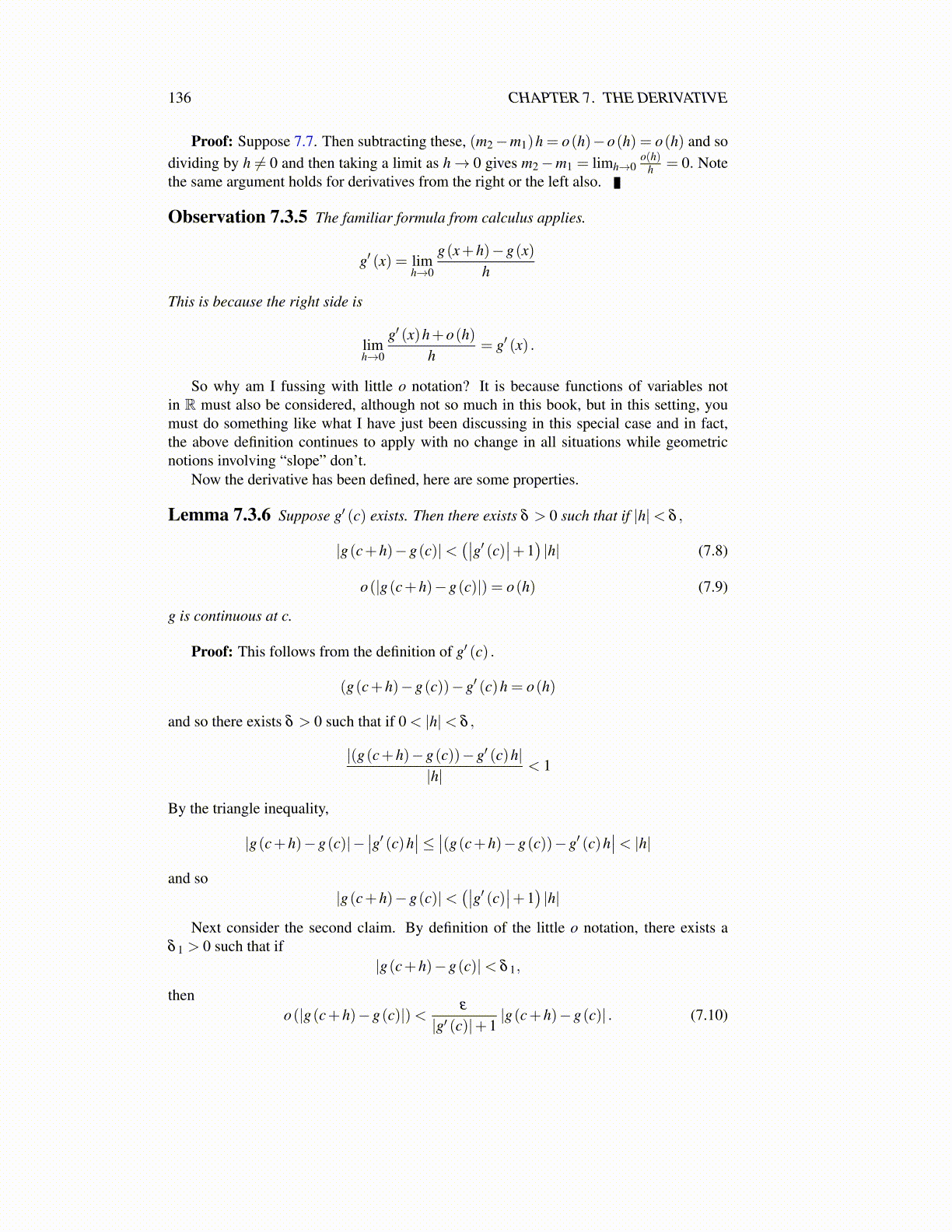
136 CHAPTER 7. THE DERIVATIVE
Here the derivative refers to either the derivative, the left derivative, or the right derivative.Also, if f (x) = a+ bx, then f ′ (x) = b where again, f ′ refers to either the left derivative,right derivative or derivative. Furthermore, in the case where f (x) = a+ bx, f (x+h)−f (x) = bh.
Proof: It is known from the definition that f (x+h)− f (x)− f ′ (x)h= o(h) . Therefore,
g(x+h)−g(x) = f (c(x+h))− f (cx) = f ′ (cx)ch+o(ch)
and so g(x+h)− g(x)− c f ′ (cx)h = o(ch) = o(h) and so this proves the first part of thelemma. Now consider the last claim.
f (x+h)− f (x) = a+b(x+h)− (a+bx) = bh
= bh+0 = bh+o(h) .
Thus f ′ (x) = b.Now consider the following description of a function. The following is the graph of the
function on [0,1] .
1The height of the function is 1/2 and the slope of the rising line is 1 while the slope of
the falling line is−1. Now extend this function to the whole real line to make it periodic ofperiod 1. This means f (x+n) = f (x) for all x ∈ R and n ∈ Z, the integers. In other wordsto find the graph of f on [1,2] you simply slide the graph of f on [0,1] a distance of 1 to getthe same tent shaped thing on [1,2] . Continue this way. The following picture illustrateswhat a piece of the graph of this function looks like. Some might call it an infinite sawtooth.
Now define
g(x)≡∞
∑k=0
(34
)k
f(
4kx).
Letting Mk = (3/4)−k , an application of the Weierstrass M test shows g is everywherecontinuous. This is because each function in the sum is continuous and the series convergesuniformly on R.
Let δ m =± 14 (4
−m) where we assume m > 2. That of interest will be m→ ∞.
g(x+δ m)−g(x)δ m
=∑
∞k=0( 3
4
)k (f(4k (x+δ m)
)− f
(4kx))
δ m
If you take k > m,
f(
4k (x+δ m))− f
(4kx)
= f(
4k(
x± 14(4−m)))− f
(4kx)
= f
4kx±
integer︷ ︸︸ ︷14
4k−m
− f(
4kx)= 0